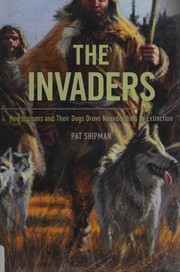Check nearby libraries
Buy this book

With their large brains, sturdy physique, sophisticated tools, and hunting skills, Neanderthals are the closest known relatives to humans. Approximately 200,000 years ago, as modern humans began to radiate out from their evolutionary birthplace in Africa, Neanderthals were already thriving in Europe—descendants of a much earlier migration of the African genus Homo. But when modern humans eventually made their way to Europe 45,000 years ago, Neanderthals suddenly vanished. Ever since the first Neanderthal bones were identified in 1856, scientists have been vexed by the question, why did modern humans survive while their evolutionary cousins went extinct? The Invaders musters compelling evidence to show that the major factor in the Neanderthals’ demise was direct competition with newly arriving humans. Drawing on insights from the field of invasion biology, which predicts that the species ecologically closest to the invasive predator will face the greatest competition, Pat Shipman traces the devastating impact of a growing human population: reduction of Neanderthals’ geographic range, isolation into small groups, and loss of genetic diversity. But modern humans were not the only invaders who competed with Neanderthals for big game. Shipman reveals fascinating confirmation of humans’ partnership with the first domesticated wolf-dogs soon after Neanderthals first began to disappear. This alliance between two predator species, she hypothesizes, made possible an unprecedented degree of success in hunting large Ice Age mammals—a distinct and ultimately decisive advantage for humans over Neanderthals at a time when climate change made both groups vulnerable.
Check nearby libraries
Buy this book

Previews available in: English
| Edition | Availability |
|---|---|
|
1
The invaders: how humans and their dogs drove Neanderthals to extinction
2015, Harvard Belknap Press
in English
0674736761 9780674736764
|
aaaa
Libraries near you:
WorldCat
|
Book Details
Table of Contents
Edition Notes
Includes bibliographical references and index.
Classifications
The Physical Object
ID Numbers
Community Reviews (0)
Feedback?History
- Created July 18, 2019
- 10 revisions
Wikipedia citation
×CloseCopy and paste this code into your Wikipedia page. Need help?
| August 8, 2024 | Edited by MARC Bot | import existing book |
| December 21, 2022 | Edited by MARC Bot | import existing book |
| December 8, 2022 | Edited by ImportBot | import existing book |
| September 17, 2022 | Edited by ImportBot | import existing book |
| July 18, 2019 | Created by MARC Bot | Imported from marc_openlibraries_sanfranciscopubliclibrary MARC record |









